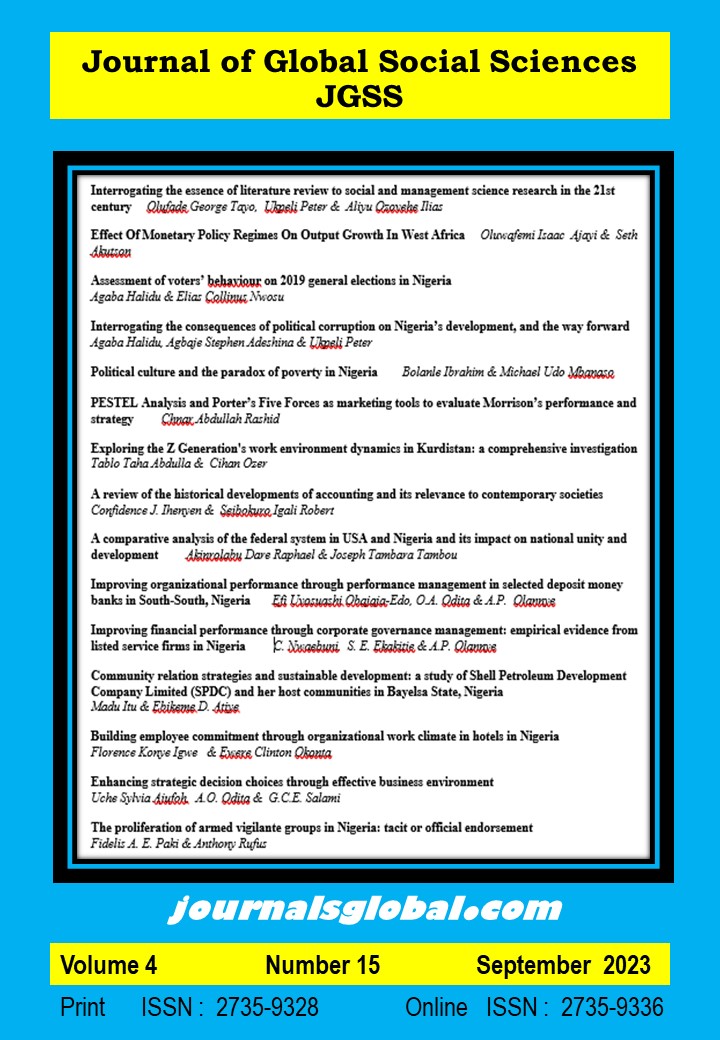Effect Of Monetary Policy Regimes On Output Growth In West Africa
DOI:
https://doi.org/10.58934/jgss.v4i15.183Keywords:
Monetary Policy, Output, West AfricaAbstract
This paper examines the effect of monetary policy regimes on output growth in West Africa. This was undertaken given that countries in the region require output growth, but are pursuing different monetary policy regimes and are yet to witness adequate output growth. So this set the objective of the study. The study made use of a longitudinal research design that obtained cross-section data from the secondary sources of the Central Banks of the selected countries, the World Bank Development Indicator, the International Monetary Fund as well as the International Financial Statistics database for the period from 2000 to 2021. The data analysis method involved using both descriptive and inferential statistics. The Panel Autoregressive Distributed Lag (ARDL) using a Pooled Mean Group (PMG) regression was used for the estimation. The results obtained indicate that the monetary policy rate was only effective in the short run to exert a significant effect on output growth, while the money supply was significant in both the short run and long run. So, the study makes the following recommendations; money supply is an effective tool for achieving output growth and this should be effectively managed to curb inflationary trends that may arise as a result of increased money supply in order not to reverse economic growth. Monetary authorities should promote activities in all sectors of the economy, particularly in the high-growth sectors. There should be cooperation between the monetary and fiscal authorities in West Africa to ensure smooth coordination and consistency in monetary and fiscal pursuits.

